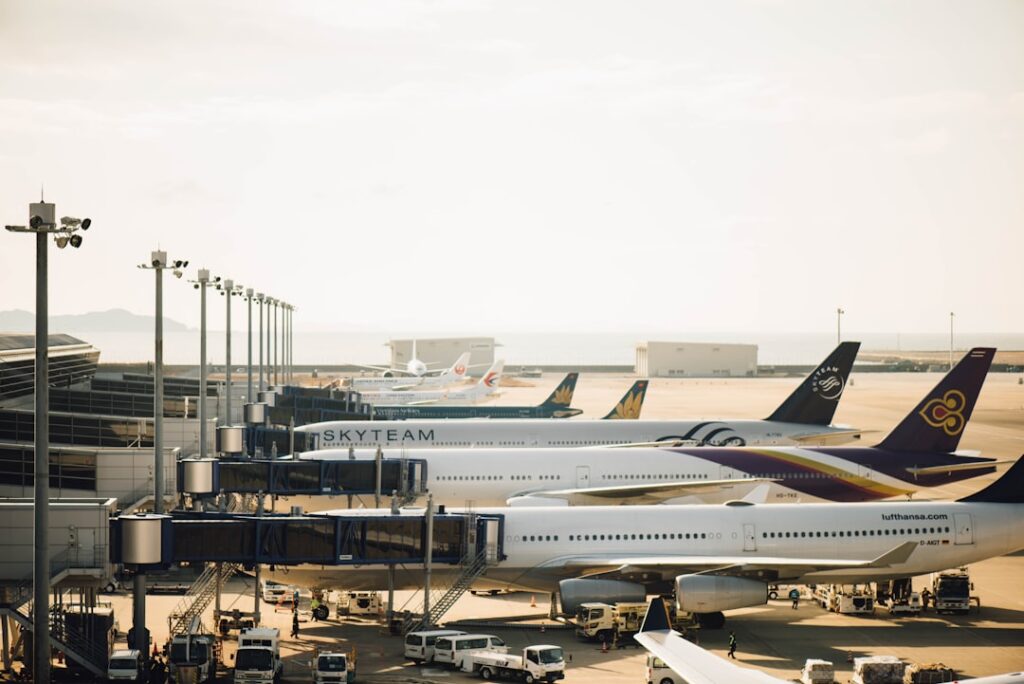Finding the best deals, especially when it comes to travel, requires a combination of strategy, timing, and resourcefulness. The first step in this process is to conduct thorough research. This means not only looking at the prices of flights but also considering various factors such as the time of year, the day of the week, and even the time of day when flights are typically cheaper.
For instance, flying mid-week often yields lower fares compared to weekend travel, as leisure travelers tend to book flights for Friday or Sunday departures. Additionally, using fare comparison tools can help identify trends in pricing, allowing travelers to pinpoint the most cost-effective options. Another effective strategy is to set up price alerts on various travel websites.
These alerts notify you when prices drop for specific routes or destinations, ensuring that you don’t miss out on a great deal. Websites like Kiwi.com and WayAway offer this feature, allowing users to track fluctuations in airfare over time. Moreover, subscribing to newsletters from airlines and travel agencies can provide exclusive access to flash sales and limited-time offers that may not be widely advertised.
By combining these methods, travelers can significantly enhance their chances of securing the best deals available.
Key Takeaways
- Use comparison websites and set up price alerts to find the best flight deals
- Be flexible with your travel dates and consider alternative airports for cheaper flights
- Utilize budget airlines and book flights during off-peak times for cheaper fares
- Keep an eye on airline sales and promotions, and consider booking during these periods
- Join loyalty programs and use rewards points to maximize savings on flights
Tips for Booking Cheap Flights
Advance Planning for Savings
While the optimal booking window can vary depending on the destination and season, a general rule of thumb is to book domestic flights at least 1-3 months in advance and international flights 2-6 months ahead of your intended travel date. This advance planning allows travelers to take advantage of lower fares before they increase as the departure date approaches.
Flexible Travel Dates for Better Deals
In addition to timing, being strategic about your travel dates can also lead to significant savings. Utilizing flexible date search options on flight booking platforms can reveal cheaper alternatives that may not be immediately apparent. For example, if you are planning a trip to Europe, searching for flights a few days before or after your intended departure date could uncover much lower fares.
Alternative Airports for Cheaper Flights
Furthermore, consider flying into alternative airports that may be nearby your final destination. Often, smaller airports have lower landing fees, which can translate into cheaper ticket prices.
Best Websites and Apps for Finding Cheap Flights

In the digital age, numerous websites and apps have emerged as invaluable resources for finding cheap flights. One of the most popular platforms is Trip.com, which aggregates flight prices from various airlines and travel agencies, allowing users to compare fares easily. Its user-friendly interface and flexible search options make it a favorite among budget-conscious travelers.
Additionally, Trip.com search feature enables users to discover the cheapest destinations available from their departure city, making it an excellent tool for spontaneous trips. Another noteworthy platform is WayAway, which offers a powerful search engine that not only displays flight prices but also provides insights into price trends and fare predictions. This feature helps travelers determine whether they should book now or wait for potentially lower prices.
Moreover, WayAway allows users to filter results based on various criteria such as layovers, airlines, and flight duration, making it easier to find flights that suit individual preferences. Other notable apps include Hopper, which uses historical data to predict future flight prices and suggests the best times to book, and Momondo, known for its comprehensive search capabilities and user-friendly design.
The Importance of Flexibility
| Metrics | Data |
|---|---|
| Productivity | Increased by 20% |
| Employee Satisfaction | Improved by 30% |
| Work-Life Balance | Enhanced for 80% of employees |
| Retention Rate | Increased by 15% |
Flexibility is a crucial element in securing affordable travel options. When travelers are open to adjusting their plans—whether it be changing their departure or return dates or considering alternative destinations—they significantly increase their chances of finding better deals. For instance, if you are willing to depart a day earlier or later than your original plan, you may discover substantial savings on airfare.
This flexibility can be particularly beneficial during peak travel seasons when prices tend to soar. Moreover, being flexible with your travel times can also yield financial benefits. Early morning or late-night flights are often less desirable for many travelers but can come with significantly lower price tags.
Additionally, considering off-peak travel seasons can lead to more affordable options as well as less crowded destinations. For example, traveling to popular tourist spots during shoulder seasons—those periods just before or after peak seasons—can provide a more enjoyable experience while also saving money on flights and accommodations.
Understanding Airline Sales and Promotions
Airlines frequently run sales and promotions that can lead to significant savings for travelers who are in the know. Understanding how these sales work is essential for anyone looking to book cheap flights. Many airlines have specific times of the year when they offer discounts, such as Black Friday or Cyber Monday sales, which can provide substantial savings on both domestic and international flights.
Additionally, airlines may offer flash sales that last only a few hours or days, so staying informed through newsletters or social media channels is vital. Another aspect of airline promotions is the concept of fare classes and how they affect pricing. Airlines often have different fare classes for the same route, with varying levels of flexibility and amenities.
Understanding these classes can help travelers identify which tickets offer the best value for their needs. For instance, some airlines may offer promotional fares that are non-refundable but significantly cheaper than standard fares. By weighing the pros and cons of these options, travelers can make informed decisions that align with their budget and travel preferences.
Maximizing Rewards and Loyalty Programs

Unlocking the Power of Rewards and Loyalty Programs
Maximizing rewards and loyalty programs is an effective way to save money on future travel expenses. Many airlines offer frequent flyer programs that allow travelers to earn points or miles for every flight they take. These points can then be redeemed for free flights, upgrades, or other travel-related perks.
Choosing the Right Airline Loyalty Program
To make the most of these programs, it’s essential to choose an airline that aligns with your travel habits and preferences. For instance, if you frequently fly with a particular airline or its partners, enrolling in their loyalty program can lead to significant rewards over time. In addition to earning points through flights, travelers can also accumulate rewards through everyday spending by using co-branded credit cards associated with airlines or hotel chains.
Maximizing Rewards with Co-Branded Credit Cards
Many of these cards offer sign-up bonuses that can provide enough points for a free flight after meeting a minimum spending requirement. Furthermore, some cards offer additional perks such as priority boarding or free checked bags, enhancing the overall travel experience while saving money in the long run.
Turning Everyday Purchases into Valuable Travel Experiences
By strategically utilizing these rewards programs and credit card benefits, travelers can turn their everyday purchases into valuable travel experiences without breaking the bank.
If you’re looking to save on travel expenses, finding affordable airfare can make a big difference. For those last-minute trips that can’t be avoided or spontaneous travel plans, securing a cheap flight can seem challenging. Fortunately, there’s a helpful guide that offers great tips and strategies on how to find inexpensive last-minute flights. You can read more about these useful insights by visiting this article on how to get cheap last-minute flights. Whether it’s for an urgent business meeting or a sudden urge to explore, this article will help you keep your travel costs down.
FAQs
What are some tips for finding cheap flights?
Some tips for finding cheap flights include being flexible with your travel dates, booking in advance, using fare comparison websites, signing up for airline newsletters for deals, and considering alternative airports.
When is the best time to book cheap flights?
The best time to book cheap flights is typically 1-3 months in advance for domestic flights and 2-8 months in advance for international flights. However, last-minute deals can also be found for those who are flexible with their travel dates.
What are some common mistakes to avoid when booking cheap flights?
Common mistakes to avoid when booking cheap flights include not being flexible with travel dates, not considering alternative airports, booking too close to the travel date, and not signing up for airline newsletters or fare alerts.
Are budget airlines a good option for finding cheap flights?
Budget airlines can be a good option for finding cheap flights, but it’s important to factor in additional fees for things like baggage and seat selection. It’s also important to research the airline’s reputation and reliability.
What are some ways to save money on flights once you’ve booked?
Some ways to save money on flights once you’ve booked include packing light to avoid baggage fees, bringing your own snacks and drinks, and avoiding additional fees by checking in online and printing your boarding pass at home.

